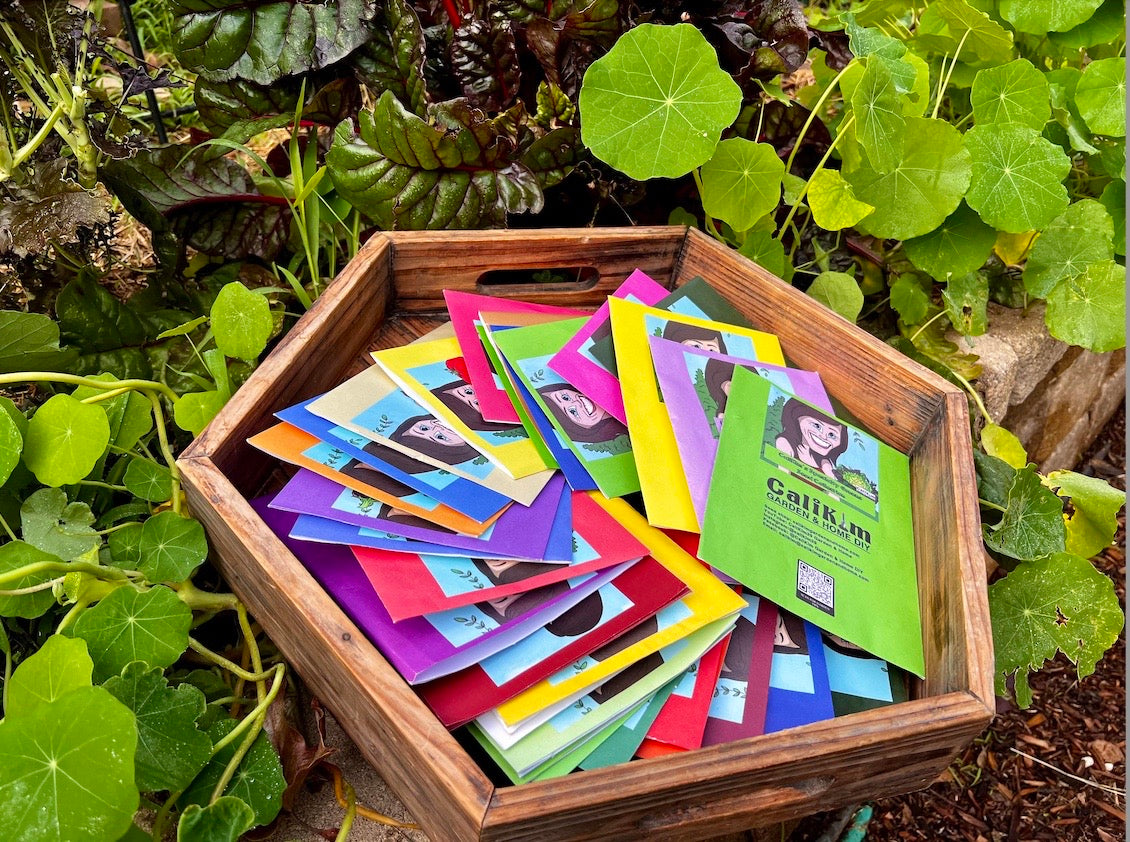Whether you’re a novice gardener or a seasoned plant enthusiast, organizing your seed collections can make a world of difference. With countless seed varieties available, a well-organized collection not only simplifies your gardening tasks but also helps you keep track of what you have. In this guide, we will explore practical and creative tips to streamline your seed organization process, ensuring that you can find exactly what you need when you need it. 
1. Choose the Right Storage Containers
Investing in sturdy, clear containers will allow you to see what’s inside at a glance, making it easier to find what you need. You might consider containers with compartments to further segment your seeds, ensuring that different types or planting seasons don’t get mixed up. The transparent design of these containers allows you to observe your collection without having to open each one, saving you valuable time during busy planting seasons.
Don’t forget to choose sizes that match your collection. For smaller seeds, consider using smaller jars to prevent them from getting lost. Meanwhile, larger seeds like beans or peas can benefit from a bit more breathing room in bigger containers. This way, everything has its own space, creating a visually appealing and efficient storage solution.
2. Label Everything Clearly
Use waterproof labels and a permanent marker to ensure that you can easily identify each seed variety. Clear labeling is not just a helpful tip; it is crucial for avoiding mix-ups when you’re ready to plant. After all, nothing is more frustrating than not knowing what type of seeds you’re about to sow!
Consider including not only the plant’s name but also its expected growing conditions and planting date on your labels. This extra information can be invaluable when planning your garden and provides a clear reminder of how to care for each variety.
3. Sort by Plant Types or Families
Grouping seeds by their plant type or family can help you quickly locate what you need for specific gardening projects. For example, storing herbs together and placing flowers in another section can significantly simplify your plant selection process come spring. This way, every time you open your storage, you’ll be greeted with an organized, user-friendly layout.
Additionally, organizing your seeds by families can also inspire you to explore companion planting, where different plants can benefit each other when grown together. You might discover wonderful combinations that enhance not only growth but taste as well!
4. Create an Inventory System
Maintaining a simple spreadsheet or a notebook listing all your seeds will help you track quantities and planting dates. This system is especially handy for keeping tabs on what you need to reorder and helps prevent you from buying duplicates. No one wants to have ten packs of the same tomato seeds when variety is the spice of life!
5. Use a Seed Starting Calendar
A calendar can guide you on when to plant each seed type, keeping your gardening on schedule. This is particularly important for gardeners in different climates, as the optimal planting time can vary widely. By marking these important dates, you make sure all your seeds get the attention they need at the right time.
You might also consider integrating your planting calendar with seasonal reminders for seed starting. By managing this carefully, you can ensure that your garden is bursting with life throughout the growing season!
6. Store Seeds in a Cool, Dry Place
Keep your seeds in a temperature-controlled environment to prolong their viability and ensure successful germination. Ideal conditions usually involve a dark, dry space like a pantry or a storage room. Excess moisture or heat can lead to seed damage, so it’s important to place them away from windows or heating vents.
Consider using silica gel packets in your storage containers to absorb excess moisture. This small addition can significantly extend the life of your collected seeds, allowing you to maintain a wider assortment for many planting seasons to come.
7. Consider Color-Coded Systems
Using different colors for different plant types or planting seasons can add a fun visual element to your organization. Perhaps green for herbs, yellow for flowers, and brown for vegetables—these simple distinctions make it easier to locate what you require while giving your space a neatly organized appearance.
This method not only makes finding seeds easier, but it can also make the organization process feel a bit like a creative project. Let your imagination flow as you decide how to color-code your collections!
8. Repurpose Household Items
Get creative by using old jars, egg cartons, or tin cans to hold and organize your seeds. Not only does this approach promote sustainability, but it also allows you to find unique ways to display your collection. An old spice rack, for example, can be transformed into a functional seed organizer, bringing both charm and organization to your gardening setup!
Just ensure whatever household items you use are clean and free from any lingering food residues that could affect seed quality. With a little ingenuity, you can create a beautiful little garden hub from items you already have!
9. Keep Track of Expiration Dates
Regularly checking and using seeds before they expire ensures you have fresh options for planting. Each packet usually comes with a ‘best by’ date or a recommended planting timeline, and adhering to this can significantly increase your success rate. Planting expired seeds may lead to poor germination, which can be frustrating, especially when you’re excited to grow your favorite plants!
10. Use Photographing Documentation
Take pictures of your seed packets and create a visual record for quick reference. This method provides an easy way to see what you have at a glance, which is incredibly helpful when you’re in a planting frenzy and need to make quick decisions. You can keep these pictures on your phone or computer for speedy access.
11. Share and Trade Seeds
Participating in local seed swaps not only organizes your collection but also enriches it with unique varieties. Sharing and trading seeds with fellow gardeners fosters community spirit and allows you to experiment with new plants. Perhaps you’d like to try growing exotic fruits or ancient grains—who knows what treasures are waiting for you at your next local swap?
12. Utilize Seed Packets Wisely
Keep seed packets intact in their original packaging to preserve crucial information until you’re ready to plant. Each packet holds valuable details such as planting depth, spacing, and care instructions that are easily missed if packets are torn apart. By maintaining them in their original form, you ensure easy access to this information whenever you need it.
13. Regularly Review Your Collection
Make it a habit to go through your seed collection periodically to reassess and reorganize as needed. This not only maintains order but also sparks joy— rediscovering seeds you had forgotten about can reignite your enthusiasm for gardening. Plus, you’ll be better informed about which seeds need to be used up soon or which ones are worth reordering.
Consider scheduling this review at the beginning or end of each gardening season; it can serve as a great transition period to help you prepare for what’s next in your gardening journey.
14. Involve Family or Friends
Get loved ones involved in the organizing process; it can make it more enjoyable and lead to helpful discussions about gardening. Whether you are recruiting kids to help with labeling or inviting friends over for a seed-sorting party, bringing others into the mix can create a fun and collaborative atmosphere. Not only do you strengthen your bonds, but you also get new ideas and perspectives to enhance the organization.
15. Embrace Digital Tools
Explore apps designed for gardeners that allow you to catalog and track your seeds digitally for easy access. Using technology can complement your physical organization methods and keeps everything neatly documented. Not only can you quickly check what you have, but you can also set reminders for planting times and seed expiration dates!





